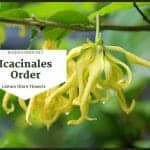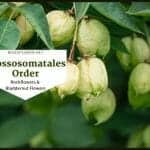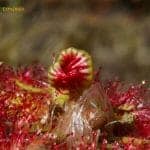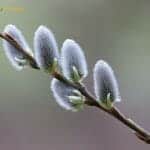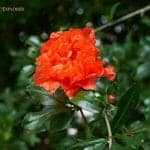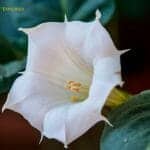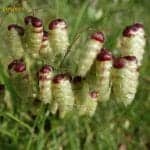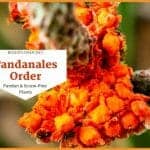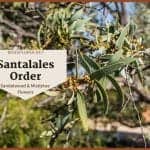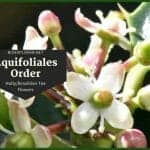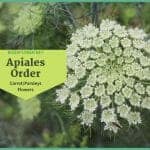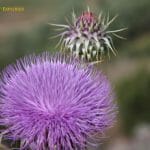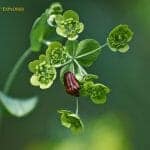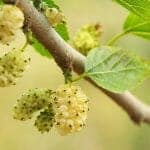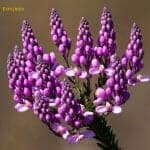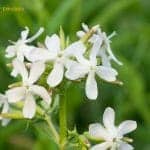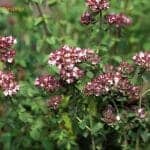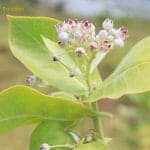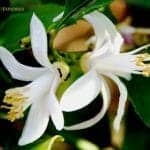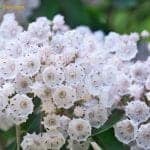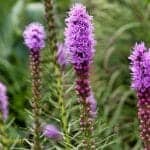top - search results
If you're not happy with the results, please do another search
Bearded Capuchin
The bearded capuchin, also called the black-striped capuchin, is a New World monkey in the Cebidae family. They are found in central and northern Brazil. Until recently, the bearded capuchins were considered a subspecies of Tufted Capuchins.
Banded Langur
The Banded langur, also known as the Raffles' banded langur or banded leaf monkey, is a primate species in the Cercopithecidae family. Like other Colobin monkeys, whose young typically have lighter-colored fur than adults, Banded langur infants have white or tan fur until it darkens around 6 months.
Bald Uakari
The obscure Bald Uakari (Cacajao Calvus) is an acrobatic Amazonian monkey with a flaming red face uniquely adapted to periodically flooded forests. Surprising insights on its taxonomy, specialized seed-based diet, unusual social life, habitat flexibility, and urgent need to conserve diminishing flooded forest habitat across the Amazon Basin.
Explore Types of Greenhouse Gases As Agents Of Climate Change
Behind the struggle to combat increasing global temperature & rapidly changing climate lies the excessive production of greenhouse gases that eventually get trapped in the atmosphere. Let's explore what greenhouse gases are, their types, and, most importantly, their contributions to climate change.
Prosimians
Prosimians are a grouping of primates currently made up of the species (both living and extinct) of two main taxonomic categories. Explore all types of prosimians here.
Types of Apes
There are two main types of apes: "lesser apes" and "great apes". Lesser apes include mainly all gibbon species, whereas the Great apes include orangutans, gorillas, chimpanzees, and bonobos.
Abbott’s Gray Gibbon
The Abbot's gray gibbon, also known as a western gray gibbon, is an acrobatic primate of the gibbons' family, Hylobatidae. Abbott's gray gibbons are very small and light. The Abbott's gray gibbon was named after zoologist William Louis Abbott.
334 Types of Monkeys
Monkeys are classified into two main groups: Old-world monkeys and New-world monkeys. Explore all 334 different types of monkeys and their facts here.
Beautiful Japanese Flowers
Japan is a beautiful country with a wide array of beautiful flowers. These Japanese flowers that bloom in different seasons are great attractions to tourists and even locals. Explore the best flowers endemic to Japan.
Order Vitales / Grapes & Boston Ivy Flowers
Members of Vitales have small flowers and simple, pinnate, or palmate leaves. The tendrils and the inflorescences are opposite to the leaves. The grapes, Boston ivy, and Chinese Virginia creeper are the example species of the order Vitales.
Order Oxalidales / Wood Sorrel Flowers
Oxalidales (Wood sorrel) order of flowering plants is annuals, perennial herbs, lianas, shrubs, and trees distributed in temperate and tropical regions. Oxalidales plants have compound leaves, actinomorphic and bisexual flowers, usually 4-5 sepals and petals.
Order Picramniales / Bitterbush Flowers
The Bitterbush order, Picramniales, are trees and shrubs with a neotropical distribution. Members of this order have bitter bark, alternate and compound leaves, alternate or sub-opposite leaflets, unisexual flowers, and non-arillate and non-endospermic seeds.
Order Icacinales / Lemon thorn Flowers
Icacinales is an order of flowering plants that are principally distributed in tropical and subtropical regions of trees, shrubs, and lianas. The members of Icacinales have simple, alternate, and exstipulate leaves, bisexual flowers, usually 4-5 sepals, and commonly 4-6 petals. Icacinales order belongs to Class Magnoliopsida. Therefore, the APG IV system places 2 direct families under Order Icacinales.
Brassicales / Mustard & Cabbage Flowers
Brassicales is an order of flowering plants comprising trees, herbs, shrubs, or lianas primarily distributed worldwide. Brassicales have glucosinolates or mustard oils, small stipules, often bisexual flowers, inflorescences in racemose, and nectaries found between the petals and the stamens. The known plants of Brassicales are mustard, cabbage, capers, mignonette, and nasturtiums.
Order Geraniales / Geranium Flowers
Geraniales is an order of flowering plants involving trees, shrubs, and herbs primarily found in the temperate and the tropics. The flowers are bisexual with 5 sepals, 5 petals, 10 stamens, 4-5 carpels, and a superior ovary. The geraniums, bridal wreath, and the common stork's bill are some of the crucial plants under Geraniales.
Order Crossosomatales / Rockflowers
Crossosomatales is a small order of flowering plants consisting of woody shrubs and trees. It is distributed in various regions across the northern and southern hemispheres. Crossosomatales or the Rockflower order is placed under Rosid eudicots and consists of 7 families and 12 genera.
Round-leaved Sundew
Drosera rotundifolia, common sundew or round-leaved sundew, is a carnivorous plant that grows in fens, marshes, and swamps. The flowers grow on one side of a single, thin, glabrous stem extending from the leaf rosette center.
Pussy Willow
Pussy Willow (Salix discolor) is a name for many smaller species in the Salix genus (sallows and willows) when their hairy catkins are young at the beginning of spring. Salix discolor, the American willow or glaucous willow, is one of the two species commonly known as pussy willow.
Pomegranate
The pomegranate (Punica granatum) is a fruity, deciduous shrub from the Lythraceae family, a subfamily of the Punicoideae. The flowers are typically bright red but can also be pink or white and are 3 cm (1.18 inches) in diameter with 4 to 5 petals.
Thornapple
Datura stramonium, commonly known as thornapple, Jimson weed, devil's trumpet, or devil's snare, is a flowering plant that belongs to the Solanaceae (nightshade) family. About 10 species of thorn apple are common in tropical and temperate climates around the world.
Red Rover
The Red Rover Mum is a beautiful large-flowered mum flower that dramatically affects any flower arrangement. Fresh, bold, and classy are the words used to describe this distinctive flower. Colors range from red to yellow, brown to pink, and the flowering period runs from mid-summer to fall.
Quaking Grass
The quaking grass (Briza media) attracts attention in every garden with its dainty inflorescences. Also known as cowquake, quaking grass belongs to the Poaceae (grass) family. t is native to Europe, North America, and Asia Minor. There are between 22 and 31 species in the genus Briza.
Painted Tongue
The relative of the petunia, the painted tongue (Salpiglossis sinuata), catches the eye with its spectacular trumpet-shaped blooms in shades of deep violet, gold, and magenta.
Order Trochodendrales / Wheel Tree Flowers
Trochodendrales, under Division Magnoliophyta, is a small order of flowers with members distributed in Southeast Asia. The Trochodendrales trees are primitive with simple leaves, no vessels, small or no stipules, and reduced perianth. The Trochodendrales flowers are bisexual and pollinated via wind (Tetracentron) or insects (Trochodendron). The wheel tree flowers belong to the order Trochodendrales.
Order Poales / Grass, Bamboo and Pineapple
Poales species are monocots with two-ranked leaves, much reduced flowers, dry and small stigma, and well-developed style. The Poales flowers are unisexual, bisexual, or sterile and pollination of the members is via anemophily or entomophily. The famous bamboo, pineapple, Yellow-eyed grass, Stream Bogmoss, and Palmiet are found under Poales order.
Order Petrosaviales / Petrosavia Flowers
Petrosaviales is a very small order grouped within the lilioid monocots, are found in eastern and southeastern Asia. Plants of Petrosaviales have no laticifers and vessels in the axial system and possess simple, small, reduced (or absent) leaves. Japolinorion osense and Petrosavia sakuraii are example flowers of the Petrosaviales order.
Order Pandanales / Pandan & Screw-Pine Plants
Panama hat palm or screw-pines order of flowers is called Pandanales, which range from arborescent plants of tropical coastal areas and rainforests to the forest floor’s twining herbs, lianas, and saprophytic herbs. Hala tree, Rainforest Screw Pine, Paca, Purple Vellozia, Creeping vellozia, and Wild Asparagus are examples of Pandanales order flowers.
Order Gunnerales / Rhubarb & Resurrection Flowers
Gunnerales order includes flowers with ellagic acids, abundant plastids in their phloem cells, hydathodal teeth in the lamina margins of the leaf, and small flowers. The Gunnerales plants are dioecious and generally pollinated via wind. The giant rhubarb and the resurrection plants are found under the Gunnerales order.
Order Dilleniales / Guinea Flowers
Dilleniales is a dicotyledonous flowers have a pantropical distribution that extends to all of Australia. The flowers of Dilleniales are often showy and bisexual. Among the species of Dilleniales are the guinea flower and the stone leaf plant. The species of Dilleniales have simple and alternate leaves, rarely present stipules, 5-merous petals and sepals, and numerous stamens united into bundles.
Order Buxales / Boxwood Flowers
The whole range of boxwood flowers belong to order Buxales. Order Buxales is the eudicot flowering plant consisting of evergreen shrubs or trees. Members of Buxales are usually monoecious with simple, non-sheathing, and estipulate leaves. Balearic box, Korean boxwood, Japanese Pachysandra, and Allegheny spurge are excellent garden flowers from this order.
Order Sapindales / Lychee and Lemon Flowers
Order Sapindales belongs to the dicotyledonous flowering species which are distributed in the tropics and the temperate regions. Most plants of Sapindales are woody with resin ducts in their bark or wood, compound or lobed leaves, and polypetalous flowers. They are polygamous, with most bisexual flowers functionally unisexual. Among the critical species involve cashew, mahogany, lemon, and lychee.
Order Santalales / Sandalwood & Mistletoe Flowers
Santalales is one of the most prominent groups of parasitic flowering plants, with species distributed worldwide. Santalales involve plants that form haustorium to penetrate the host's barks and roots, plants that undergo photosynthesizing activities in the stem, and members with usually simple and exstipulate leaves. Sandalwood and mistletoes are just two of the known plants under Santalales.
Order Paracryphiales / Possumwood & Tawheowheo Flowers
This Possumwood order plants have scaly vegetative buds, simple, alternate, and leathery leaves, and 4-5 sepals and petals. The Paracryphiales plants are hermaphrodite or andromonoecious. Known examples are the grey possumwood and tawheowheo.
Order Huerteales / False Pistachio & Olomea Flowers
Huerteales is an unusual order of flowers belonging to the rosids, a large eudicot group. The small trees and shrubs are primarily found in tropical or warm temperate regions. Plants in Huerteales usually possess alternate leaves, small and actinomorphic flowers, and 5-merous floral parts. Most Huerteales flowers are bisexual, and all possess nectaries to promote pollination. All species of Huerteales are woody, like the Olomea, brown-ironwood and False pistachio.
Order Escalloniales / Redclaws & Laurel Flowers
Escalloniales is an order of eudicotyledonous flowers placed under the clade of campanulidas. Being predominantly distributed in the southern hemisphere, Escalloniaceae plants possess simple, petiolate, exstipulate leaves, regular flowers mostly in racemose, and pentamerous floral parts. Redclaws, Chachacoma, Native laurel, Polyosmo leratii and white alder are among the beneficial Escalloniacea species.
Order Cornales / Dogwood Flowers
The dogwood order of flowers, Cornales, is basal among asterids. Cornales is relatively small, but members are morphologically diverse and are cosmopolitan in distribution. Cornales plants are mostly woody with simple or compound leaves, small flowers, floral parts in multiples of four, and generally bisexual. Many of the species of Cornales, like the flowering dogwood and Lindley’s blazing star are of ornamental value.
Order Bruniales / Redleg & Spiny Desfontainia Flowers
The Order Bruniales plants typically possess small, persistent, and simple leaves, small to medium-size flowers, mostly 5-merous in the calyx and corolla, and usually clawed petals. The members of Bruniales are hermaphrodites and undergo pollination via insects and hummingbirds. Known example flowering species are redlegs, common cotton bush, Cone stompie and the spiny desfontainia.
Order Berberidopsidales / Coral Plant Flowers
Berberidopsidales is a small order of flowering species under the clade of the core eudicots. The species of Berberidopsidales possess crystals, usually have 5-merous floral parts and usually small flowers. Coral plant and Olivilla flowers are among the only 4 species of Berberidopsidales.
Order Aquifoliales / Holly & Brazillian Tea Flowers
Aquifoliales is the holly order of flowering plants, including the common holly and Brazillian tea plants. They are primarily distributed worldwide with usually evergreen trees and shrubs. The Aquifoliales leaves are typically alternate, exstipulate, and lack leaf sheath. American holly, Churnwood, and Japanese helwingia are Aquifoliales flowers.
Order Apiales / Carrots and Parsleys Flowers
Apiales are an order of flowering plants belonging to Class Magnoliopsida. The species of order Apiales are distributed worldwide and involve important and common plants like carrot, parsley, and ginseng.
Order Dioscoreales / Yams Flowering Plants
Order Dioscoreales is a family of flowering plants which most commonly include herbaceous plants. The famous yam Plant order consists of 21 genera and 900 species worldwide. The most important plants of this plant order have a massive number of medicinal and food properties. Yams, Bluethread, and Colic Roots are examples of flowering plants in this order.
Artichoke thistle
Cynara cardunculus, also known as Artichoke thistle or cardoon, is a delicate, erect, columnar, and vigorous perennial with spiny, sharp, serrated, deeply lobed, silvery-gray leaves and thistle-like blooms. Typically, it grows in a tuft up to 3 feet tall, from which flower stalks rise up to 6 feet tall, topped with blue-violet flowers.
Bupleurum
A well-known flowering plant native to southern Europe and central Asia, Bupleurum is a short-lived perennial or annual herbaceous plant closely related to dill, fennel, and other umbel-forming plants. Its branching stems can reach 45 to 91 cm and have small yellow florets contained in greenish-yellow bracts.
Mulberry
Mulberry is the name given to various types of deciduous trees or shrubs of the Morus genus in the Moraceae family cultivated for their palatable fruits. The trees produce small greenish-yellow flowers in dense clusters and an oval cluster fruit made from individual stone fruits.
Misty Blue Limonium
As a member of the family Plumbaginaceae, Limonium has more than 120 species of flowering plants. The two main groups of this genus comprise hybrids of Limonium latifolium and Limonium sinuatum. Misty Blue Limonium is a variety of Latifolium with blue flowers. Its hairy, branched stems usually reach 12 to 18 inches tall and are topped with racemes of small, papery florets.
Milkwort
Milkwort (Polygala vulgaris) might not have the most endearing name. Still, it's one of the stars of the early-fall summer show in Europe. The flowers are usually dark blue to light blue, but they can also be pink, purple, and white. The flowers have small petals surrounded by a pair of flat-top sepals that look like petals.
Godetia
As soon as the temperatures rise again in early summer, the flowers of Godetia grandiflora peak. Also known as the satin flower, the godetias consist of up to 25 species of flowering plants. These come in many bright shapes and shades, from delicate pastels and sheer satin white to eye-catching two- and three-tone combinations of sparkling apricot, mauve, lavender, carmine, red, purple, pink, orange petalled blooms.
Night-flowering Catchfly
Night-flowering Catchfly (Silene noctiflora) is a species of plant in the Caryophyllaceae family, known by the common names clammy cockle and night flowering silene. With almost 900 species, it's the largest genus in the Caryophyllaceae family. The corolla is white, sometimes with pinkish tones, and has five narrow, spreading claw-shaped lobes that are deeply serrated with rounded and slightly serrated ends.
Nicotiana
Discover the rich history and stunning beauty of Nicotiana species in Mexico, featuring night-blooming flowers, ancient rituals, and their enduring cultural significance.
Marjoram
Also known as sweet marjoram, Marjoram (Origanum majorana), is a perennial plant from the Lamiaceae (mint) family that is cultivated as a culinary herb. The Origanum genus is currently assigned to around 40 species. The small marjoram flowers are predominantly white to scarlet red in color.
Manchineel
The Manchineel tree (Hippomane mancinella) is a species of the family of the Euphorbiaceae family. Its distribution area extends from northern South America to the tropical south of North America. The Manchineel trees produce tiny greenish-yellow blossoms that appear in spikes.
Lemon Blossom
Lemon (Citrus × limon) is a hybrid of the genus Citrus and the common name for the popular edible fruit of this small, sprawling tree or shrub. The slightly fragrant flowers can be single, or there can be two or more. The opened flowers have 4 or 5 petals, white on top and purple on the underside.
Order Acorales / Sweet Flag Flowers
Acorales commonly called the sweet flag order of flowering plants is considered the most basal lineage of monocotyledons (monocots). There is only one family in this order called Acoraceae and one genus, Acorus divided into two to four plant species that resemble irises.
Order Piperales / Paleoherb Spicy Fragrant Flowers
The Piperales are paleoherbs, which are plants that are similar or closely related to the monocots. Piperales order is divided into 3 families. Piper nigrums, birthworts, Lizard-tail, and Aristolochia are some of the good species in Piperales.
Order Canellales / Cinnamon & Shrub Flowers
Canellales is the Order of flowering plants that belong to the magnoliids clade, an angiosperm tree early branch. Canellales include flowering species such as Wild Cinnamon, Chupacallos, Saro plant, Mountain Cinnamon, African Greenheart, Pepper Tree, Northland Horopito & many more.
Kalmia
Kalmia flowers can only grow wild in a few selected habitats worldwide and are perhaps better known as mountain laurel. Each flower (up to 1 inch wide) is cup-shaped with 5 sides and ranges from white to pink with purple markings interior.
Kalanchoe
The Kalanchoe blossfeldiana, commonly known as Kalanchoe, is among the most versatile succulents and is loved for its pretty leaves and colorful blooms. Their flowering time is incredibly long for an indoor plant. These yellow, pink or bright red flower racemes last for several weeks.
Hollyhock
An epitome of cottage gardens, Hollyhocks (Alcea rosea) are towering flowers that bloom in a wide range of colors for an extended period in summer. Hollyhocks are available in various colors, including yellow, white, red, purple, pink, blue, and even black.
Globe Thistle
Globe Thistle is among the prickly jokes of life. They thrive nearly everywhere and carry a dreadful sting when they come in contact with the skin. However, they are excitingly shaped and available in deep purples and blues that are beautiful additions to the garden.
Gayfeather
Gayfeather (Liatris spicata), commonly known as the Blazing Star, Marsh Blazing Star, or Dense Blazing Star, is a tall, erect, lumpy perennial native to low-lying wetlands, grasslands, and marsh edges. It has terminal ends (6 to 12" long) of stalkless, round, downy, dark purple buds (up to 3/4" wide each) that appear on stiff, upright, leafy pedicels.














